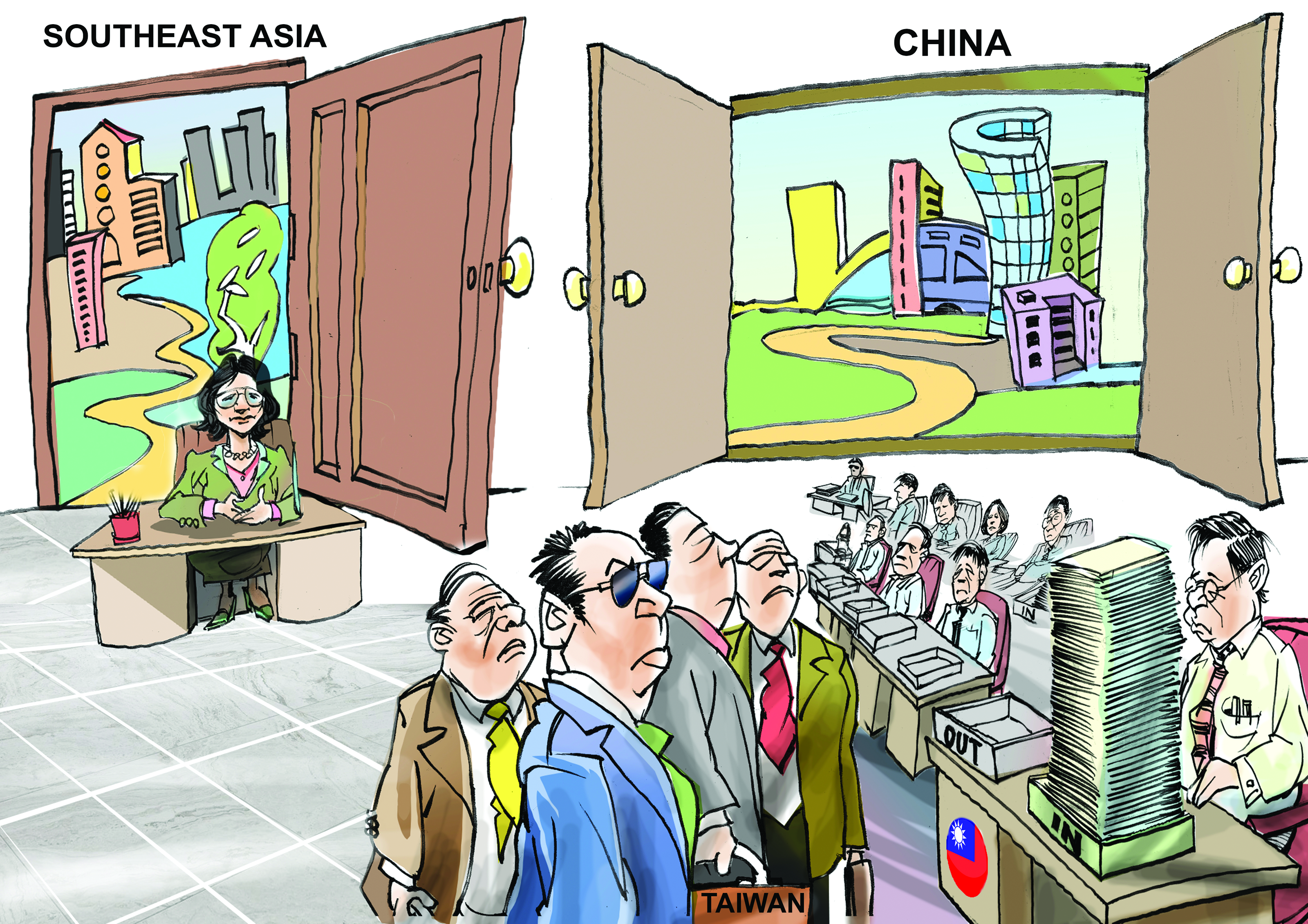 OF Cathay United Bank’s eight overseas branches in Asia, four are in China. The bank, one of Taiwan’s largest, has a pending application with the Financial Supervisory Commission to establish a subsidiary in the mainland.
OF Cathay United Bank’s eight overseas branches in Asia, four are in China. The bank, one of Taiwan’s largest, has a pending application with the Financial Supervisory Commission to establish a subsidiary in the mainland.Tsai Ing-wen’s leadership has explicitly urged financial institutions to expand in Southeast Asia in line with its policy to ease the sector’s exposure to China. But this hasn’t dampened ambitions of many Taiwanese banks to pursue business in the mainland.
“China is difficult, but important to us,” says Alan Lee, president at Cathay United Bank. To be sure, many of Taiwan’s banks heeded the government’s call to expand in the south. Cathay United has representative offices in six Southeast Asian countries including Malaysia and Vietnam. It runs branches in some of these markets and are opening more over the coming years under its expansion plan.
Many Taiwanese banks have risen to become major Asian regional players. State-controlled Mega International Commercial Bank has about 11 branches spread across Asia including China. E.Sun Bank and CTBC have also extended their businesses to a number of Southeast Asian countries over the last five years.
But China’s allure appears difficult for any Taiwanese bank to resist. China is making banking regulations easier for foreign-registered banks to do business there. Moreover, Beijing’s Belt and Road initiative has fanned excitement across Taiwan’s business community.
John Huang, CEO at Cathay United Private Bank, believes China is a market that is too important to ignore. The bank’s clients are seeing the value of the Belt and Road initiative that is centred on infrastructure development along an ancient trade path that spans Asia and Europe. Clients will require their banks to help them navigate this infrastructure plan.
“A lot of our clients see their future to be very much tied to Belt and Road,” says Huang, adding that he is seeing increased business in the mainland because of the Belt and Road.
“They (clients) are trying to return to China because of Belt and Road. How do you move your manufacturing and business to a location benefitting from this grand policy? This is one scope of thought,” he adds.
China’s move to ease restrictions for foreigners to do business in the financial sector is also attracting the attention of Taiwanese financial institutions. In March 2017, China Banking Regulatory Commission (CBRC) further liberalized regulations for foreign banks, allowing them to underwrite Chinese government bonds, run custodian businesses and provide financial advisory services without having to submit formal applications with CBRC.
Moreover, opportunities are no longer concentrated in China’s major cities and provinces. Taiwanese businesses are flocking to cities like Suzhou of Jiangsu province where they thrive. Suzhou city today is home to over 11,000 Taiwanese companies with more than 50,000 employees from Taiwan. Fourteen of the 26 Taiwanese firms listed on Shanghai’s mainboard are based in Suzhou. – DH





.jpg)
.jpg)


